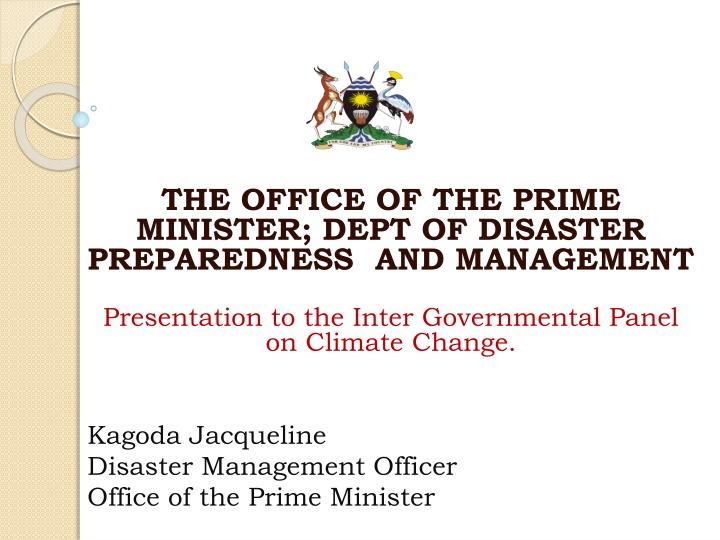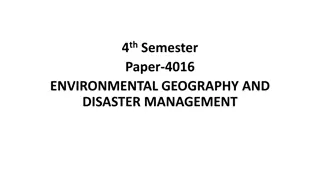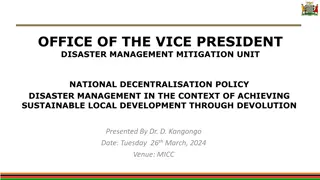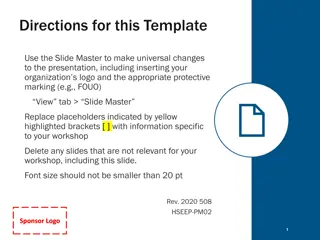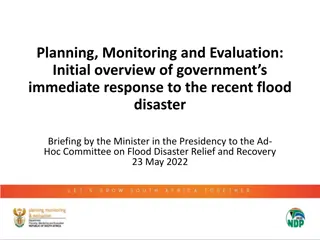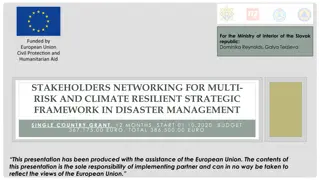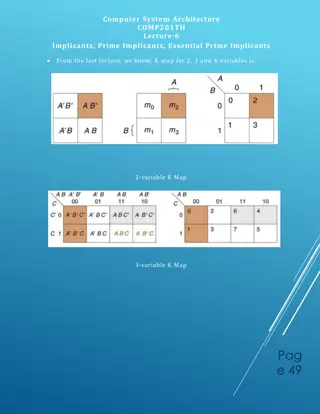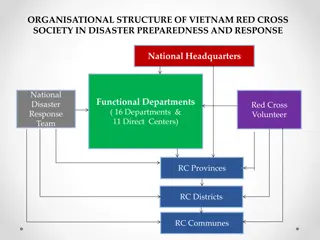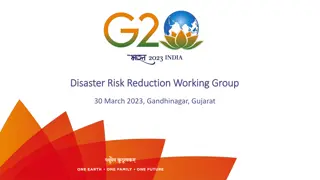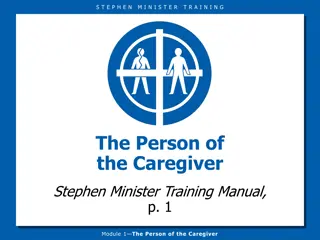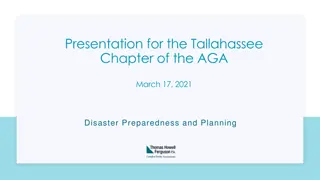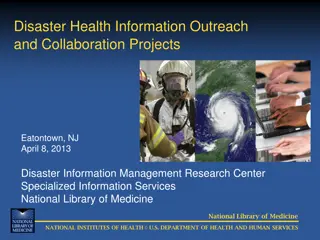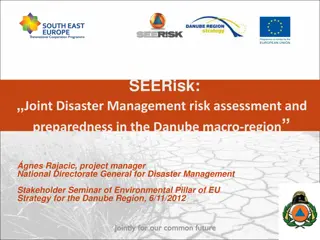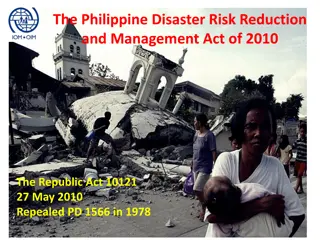THE OFFICE OF THE PRIME MINISTER; DEPT OF DISASTER PREPAREDNESS AND MANAGEMENT
Presentation by Jacqueline Kagoda, Disaster Management Officer at the Office of the Prime Minister, highlighting the mission, objectives, and guiding principles of disaster preparedness and management. It discusses key coordination structures at national and local levels, progress updates on policies, capacity building initiatives, relief efforts, and ongoing implementations for disaster risk reduction and community support.
Download Presentation

Please find below an Image/Link to download the presentation.
The content on the website is provided AS IS for your information and personal use only. It may not be sold, licensed, or shared on other websites without obtaining consent from the author.If you encounter any issues during the download, it is possible that the publisher has removed the file from their server.
You are allowed to download the files provided on this website for personal or commercial use, subject to the condition that they are used lawfully. All files are the property of their respective owners.
The content on the website is provided AS IS for your information and personal use only. It may not be sold, licensed, or shared on other websites without obtaining consent from the author.
E N D
Presentation Transcript
THE OFFICE OF THE PRIME MINISTER; DEPT OF DISASTER PREPAREDNESS AND MANAGEMENT Presentation to the Inter Governmental Panel on Climate Change. Kagoda Jacqueline Disaster Management Officer Office of the Prime Minister
Mission And Objective Mission: To create an effective framework through which disasters preparedness & MGT is entrenched development processes, saving lives,livelihoods & resources Goal: To establish mechanisms that vulnerability of the people property to disasters in all aspects focussing on institutions reduce & will the & their
Guiding Principles of DDP&M. Any policy sets guiding principles upon which implementation is premised, for this policy they include in summary: -Using a multi sectoral approach -Community participation in DRR -Public awareness -Use of adequate expertise & technology -Vulnerability analysis -Observance of human rights -Consideration of climate change - Maintaining partnerships & coordination in DRR
Key coordination structures National: -OPM is the Central Coordinating Ministry on Disasters. -Inter- Agency Technical Working Group (Disaster Risk Reduction Platform) chaired by CDPM on behalf of PS. NB. Parliament has a role to play in implementing the policy. We have a Parliamentary Forum on Disaster Risk Reduction. Local: District Disaster Policy Committee (DDPC) District- District Disaster Committees (DDMCs) Sub-county- S/C Disaster mgt committee (SDMCs) Village Disaster Mgt committees (VDMC)
Progress of DDP&M Policies such as the IDP, DPM and draft Peace Policy. Monthly meeting of the DRR and Peace platform. Cabinet S/C on emergencies under the Rt. Hon. 2nd Dep. PM; relocation of communities at high risk in Elgon sub region. Archiving Disaster data through the Des Inventor. Capacity Building; BCP training for key sectors such as Education,Health,Water etc. essential towards
Contd Provision of Relief and Non Food Items to affected communities, in addition to Food security assessments. DDMC and Contingency Planning Training for some districts.
What is being Implemented Further DDMC and Contingency Planning training. Multi hazard risk and vulnerability mapping of the different regions. Resettlement of Bennet Community and communities at risk of landslides in Elgon. Emergency Simulation training on Floods and refugees planned for this year. Early Warning Systems especially for floods together with MET & UCC.Survey being done in Butaleja. NECOC is being equipped with the DRM comprehensive hardware and software such as Arc GIS, Modelling softwares on climate related risks such as floods etc. Country Programming Paper to end Drought Resilience in partnership with MAAIF is underway. International DRR and Peace Day Celebrations are being planned.
Challenges Limited level of mainstreaming of DRR into the respective sector plans and budgets at all levels. Inadequate understanding of the approach to disasters. i.e. prevention, mitigation prevention (proactive) should be the focus as opposed to response (reactionary). Inadequate resources. Lack of a contingency fund. Inadequate early Sometimes the information is not accurate; it comes very late planning/preparedness. and warning systems. to allow early
